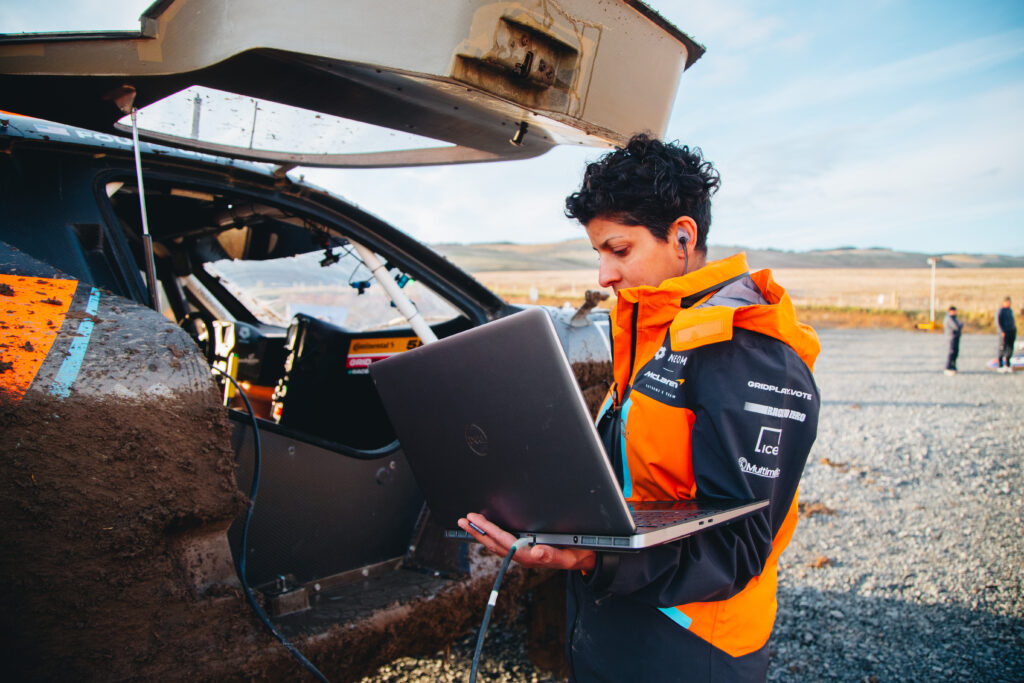Kim Wilson and Kate O’Hara-Hatchley chart the environmental and social progress of one of motorsport’s most iconic brands
Ayrton Senna famously said that the only achievement in coming second was being the first loser, typifying the intensely competitive nature of F1.
And while the heat of competition has not dampened a jot in the three decades since the Brazilian great illuminated tracks around the world, there is one subject that the teams are slowly coming together around: sustainability.
Leading the charge is McLaren, the team that Senna represented with distinction, which, through chief executive Zak Brown, has called for greater collaboration between teams to drive positive environmental and social impact.
Part of its call to action is a “comprehensive set of exclusion” to the F1 cost cap that would support team objectives as well as the wider F1 sustainability agenda.
“Nobody had sustainability at the front of mind when the cost cap was designed,” Kim Wilson, McLaren’s sustainability director, tells The Sustainability Report. “It wasn’t by any intent to exclude it, but it did mean that we were facing a choice that we didn’t want to have to make ultimately, which was: do we invest in on-track performance, or do we invest in sustainability improvements?”
The review of the regulations from 2026, says Wilson, is an opportunity to take “more urgent action” and “unlock some of the barriers” when it comes to balancing elite performance and environmental and social responsibility.
Training and initiatives around diversity, equity and inclusion, team wellbeing initiatives and costs related to intern and apprentice programmes geared towards a more seamless pathway into motorsport and STEM careers are among the exclusions that McClaren has put forward.
The team, which has won eight F1 Constructors’ Championships, is also asking for the introduction of “clear sustainability criteria” into the Concorde Agreement that governs the sport and “clear requirements” for promoters and organisers to meet certain sustainability standards.
But, through all the compromises and trade-offs, McLaren’s 2022 Sustainability Report (published last week) showcases a sustainability programme that, at least in the sports industry, is as distinctive as the trademark papaya colour that adorns its cars and drivers.
One of its standout ambitions is to develop the first fully circular F1 car, a project that started in 2022 with a life cycle assessment that reviewed the environmental impact of materials used and processes it undertakes to manufacture the car.
With its partner Bcomp, McLaren has explored ways to develop more circular bodywork parts, particularly looking at which sections of the car can be produced using recycled carbon fibre. More sustainable materials for safety and structural parts, the power unit and tyres are also among its priorities.
Discovering more circular solutions and processes is crucial for the team’s climate goals. According to the report, 36% of McLaren’s carbon footprint (and the largest single contributor) is related to materials and manufacturing processes. If this can be reduced significantly it will go some way to supporting its goal to reduce emissions by 50% by 2030 against a 2019 baseline and 90% 10 years later.
McLaren is the only motor racing organisation that has teams in F1, IndyCar, Formula E and Extreme E, and being part of those diverse ecosystems has helped to accelerate much of its sustainability work, particularly the latter two competitions that were established as shop windows for climate action as much as sport.
“Formula E has done quite a lot of work on the design of the car in terms of circularity and alternative materials, and that’s something we’re very keen on learning from,” Wilson explains. “Across Formula E, Extreme E and IndyCar, they’ve all done some really interesting work on sustainable tyres.”
Those learnings aren’t limited to environmental sustainability, adds Kate O’Hara-Hatchley, McLaren’s head of diversity, early careers and development.
“Formula E is city street racing, so this gives us an opportunity to engage with populations in those locations and Extreme E has the gender balance element, so I think as a racing series there’s awesome credibility there,” she says.

The NEOM McLaren Extreme E team has given its backing to the competition’s Racing For All initiative, which was informed by the Hamilton Commission Report and provides opportunities for groups that are traditionally underrepresented in motorsport.
It feeds into McLaren’s wider organisational goal of being the “most diverse and inclusive team in sport”, with an ambition to have 40% of its workforce coming from underrepresented groups by the end of the decade.
Improving data, O’Hara-Hatchley says, has been a key element of progress over the last year to make sure diversity and inclusion programmes are working. A new HR system was integrated into the company in 2022 to capture accurate and detailed information about employee demographics and to “track progress and identify areas for improvement”.
A survey conducted by ESPN in 2021 laid bare the dearth of women working in F1. McLaren was the only team to declare a woman in a senior role race side, although only 7.5% of regular race staff were women. The Driven Women network has been established to support female talent in its workforce and to provide opportunities to keep them in the industry.
To coincide with the publication of its sustainability report, McLaren announced the creation of its all-female STEM programme to give an initial cohort of 60 scholars a pathway to a career in STEM with the support of its partners, Google, Cisco and Cadence.
Over the course of 2022, 45 McLaren STEM ambassadors supported 4,000 students, mentored 20 further and higher education students, hosted 15 work experience students and interacted with 1,000 members of the public at the Goodwood Festival of Speed.
“We give really meaningful opportunities through the programmes that we deliver,” says O’Hara-Hatchley. “Internships, work experience, returnships – ultimately, giving people that first gig is probably the most impactful thing you can do.”
Within the McLaren sustainability report is a graphic with the organisation’s sphere of influence, with McLaren Racing in the centre and several stakeholders cascading out, including the wider automotive industry, business community, fans and society.
Both Wilson and O’Hara-Hatchley stress that they want to be ambitious and move beyond McLaren’s direct value chain to make a positive impact, taking cues from Extreme E’s Legacy Programme that establishes conservation and carbon mitigation projects in host destinations.
“It’s understanding the needs and issues faced by the local communities where we race,” says Wilson. “Where can we give back most in society? What can we do ourselves and through our partnerships?”
Opt into our weekly newsletter for exclusive content focused on sustainability strategy, communication and leadership for sport’s ecosystem.










Leave a Comment
Your email address will not be published. Required fields are marked with *